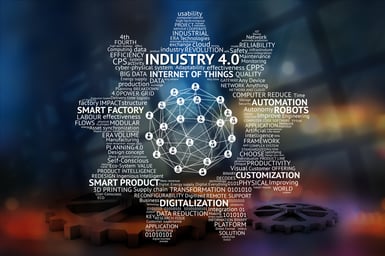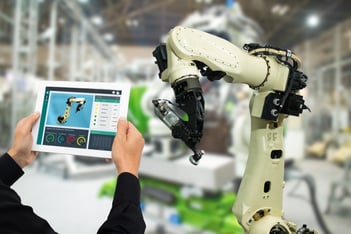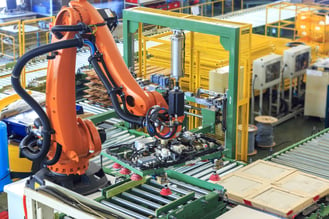 There are a number of roadblocks preventing manufacturers from achieving true Industry 4.0 processes, and at the same time, there are a number of emerging solutions bringing production further into the future.
There are a number of roadblocks preventing manufacturers from achieving true Industry 4.0 processes, and at the same time, there are a number of emerging solutions bringing production further into the future.
In today’s manufacturing environment, numerous sensors are deployed at every stage of production to gather as much information as possible at the ground level. These sensors may be used to determine the position, pressure, or temperature of a machine or system, or they may be used to monitor the quality of production. Robotics often feature several sensor systems that relay information on production quality and progress.
A wealth of information is generated at any given instance of production. However, the true tenants of Industry 4.0 are often not achieved in today’s production environments. There are a number of roadblocks preventing manufacturers from achieving true Industry 4.0 processes, and at the same time, there are a number of emerging solutions bringing production further into the future.
 Data in today’s production environments oftentimes tends to follow a similar structure. Typically, automation information flows from one level to the next. Sensors on the shop floor aggregate data and communicate this information directly with higher level controls. Machine controls exchange data with production planning, which in turn exchanges data with enterprise resource planning (ERP) systems.
Data in today’s production environments oftentimes tends to follow a similar structure. Typically, automation information flows from one level to the next. Sensors on the shop floor aggregate data and communicate this information directly with higher level controls. Machine controls exchange data with production planning, which in turn exchanges data with enterprise resource planning (ERP) systems.
Additionally, most manufacturers will set up a private cloud or edge cloud for data storage. This is done for the purpose of creating a central pool where data can be accessed from different sources. The access permissions are usually strictly regulated and only changed when a new source requires the information stored in the cloud.
This hierarchy is beneficial in capturing and storing large amounts of information, but there are downfalls.
The Challenges in Achieving Industry 4.0 in Modern Manufacturing
 A true Industry 4.0 environment requires seamless exchange of data between multiple levels for greater visibility and connectivity in all production processes. In the typical hierarchy outlined above, a lot of production data is inherently filtered out at each stage of data exchange. This data filtering inhibits the ability for actionable insight into every part of production.
A true Industry 4.0 environment requires seamless exchange of data between multiple levels for greater visibility and connectivity in all production processes. In the typical hierarchy outlined above, a lot of production data is inherently filtered out at each stage of data exchange. This data filtering inhibits the ability for actionable insight into every part of production.
Further, existing data hierarchies in automation prevent Industry 4.0 from truly being achieved because of the speed in which data is shared. Most production processes happen at an extremely high cycle rate, meaning data must be quickly processed and shared for real-time correction and insight to truly occur. In most instances, the sharing of data from one level to another is too slow for real-time or preventative action.
Industry 4.0 is the golden standard for all manufacturers. The ability to connect and gain insight into all aspects of production has the potential to dramatically enhance productivity on an ongoing basis. There are many obstacles to achieving this in today’s manufacturing environment, but there are emerging solutions, too.
This article originally appeared on the Robotics Online Blog. Robotic Industries Association (RIA) is a part of the Association for Advancing Automation (A3), a CFE Media content partner.









